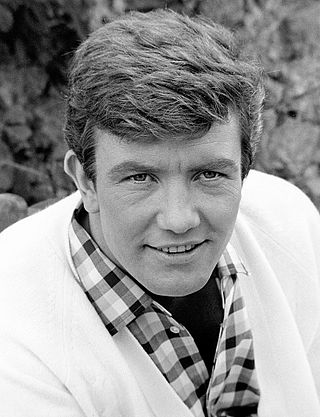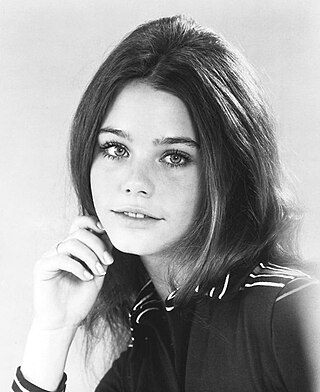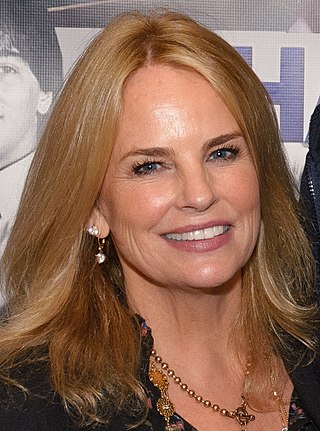
John Michael Crichton was an American author, screenwriter and filmmaker. His books have sold over 200 million copies worldwide, and over a dozen have been adapted into films. His literary works heavily feature technology and are usually within the science fiction, techno-thriller, and medical fiction genres. Crichton’s novels often explore human technological advancement and attempted dominance over nature, both with frequently catastrophic results; many of his works are cautionary tales, especially regarding themes of biotechnology. Several of his stories center specifically around themes of genetic modification, hybridization, paleontology and/or zoology. Many feature medical or scientific underpinnings, reflective of his own medical training and scientific background.

Albert Finney was an English actor. He attended the Royal Academy of Dramatic Art and worked in the theatre before attaining fame for movie acting during the early 1960s, debuting with The Entertainer (1960), directed by Tony Richardson, who had previously directed him in theatre. He maintained a successful career in theatre, movies and television.

James Harrison Coburn III was an American film and television actor who was featured in more than 70 films, largely action roles, and made 100 television appearances during a 45-year career.

Susan Hallock Dey is a retired American actress, known for her television roles as Laurie Partridge on the sitcom The Partridge Family from 1970 to 1974, and as Grace Van Owen on the drama series L.A. Law from 1986 to 1992. A three-time Emmy Award nominee and six-time Golden Globe Award nominee, she won the Golden Globe for Best Actress in a Drama Series for L.A. Law in 1988.

Congo is a 1980 science fiction novel by Michael Crichton, the fifth under his own name and the fifteenth overall. The novel centers on an expedition searching for diamonds and investigating the mysterious deaths of a previous expedition in the dense tropical rainforest of the Congo. Crichton calls Congo a lost world novel in the tradition founded by Henry Rider Haggard's King Solomon's Mines, featuring the mines of that work's title.

Albertina Marie Majorino is an American film and television actress. She started her career as a child actor, starring in films such as Andre; When a Man Loves a Woman; Waterworld; Corrina, Corrina; and Alice in Wonderland.

Cynthia Jane Williams was an American actress and producer. She is best known for her role as Shirley Feeney on the television sitcoms Happy Days (1975–1979), and Laverne & Shirley (1976–1982). She also appeared in American Graffiti (1973), The Conversation (1974), Mr. Ricco (1975), and More American Graffiti (1979).
Mousey is a 1974 Canadian thriller action drama film directed by Daniel Petrie, and starring Kirk Douglas, Jean Seberg and John Vernon.

Leigh Taylor-Young is an American actress who has appeared on stage, screen, podcast, radio, and television. Her most well-known films include I Love You, Alice B. Toklas (1968), The Horsemen (1971), The Gang That Couldn't Shoot Straight (1971), Soylent Green (1973), and Jagged Edge (1985). She won an Emmy for her role on the hit television series Picket Fences.

Jennifer Collene Rubin is an American actress. A competitive swimmer during her youth, Rubin was discovered by the Ford Modeling Agency and went on to model for Calvin Klein and became Ford International Model of the Year in 1984. She made her film debut as Taryn White in the 1987 horror film A Nightmare on Elm Street 3: Dream Warriors and has since starred in a variety of films including Andrew Fleming's Bad Dreams (1988), Marisa Silver's Permanent Record (1988), Oliver Stone's The Doors (1991), Alan Shapiro's The Crush (1993), Louis Venosta's The Coriolis Effect (1994), Christian Duguay's Screamers (1995), and the 2001 Dogme 95 inspired film Reunion. Outside of film, Rubin has guest starred on a variety of television series such as The Twilight Zone (1987) and Tales from the Crypt (1992). In 2010, Rubin appeared as herself in the documentary Never Sleep Again: The Elm Street Legacy and has since been also working as a writer, producer & director on her original screenplays.
Mathematical Applications Group, Inc. was an early computer technology company founded in 1966 by Dr. Philip Mittelman and located in Elmsford, New York, where it was evaluating nuclear radiation exposure. By modeling structures using combinatorial geometry mathematics and applying monte carlo radiation ray tracing techniques, the mathematicians could estimate exposures at various distances and relative locations in and around fictional structures. In 1972, the graphics group called MAGi/SynthaVision was formed at MAGi by Robert Goldstein.

Jennifer Victoria Runyon is an American actress. She made her feature-film debut in the slasher film To All a Goodnight (1980), and went on to have supporting roles in the comedies Up the Creek (1984) and Ghostbusters (1984). She also had a lead role as Gwendolyn Pierce in the 1984 sitcom Charles in Charge during its first season. In 1988, she portrayed Cindy Brady in the television film A Very Brady Christmas.

The Carey Treatment is a 1972 American crime thriller film directed by Blake Edwards and starring James Coburn, Jennifer O'Neill, Dan O'Herlihy and Pat Hingle. The film was based on the 1968 novel A Case of Need credited to Jeffery Hudson, a pseudonym for Michael Crichton. Like Darling Lili and Wild Rovers before this, The Carey Treatment was heavily edited without help from Edwards by the studio into a running time of one hour and 41 minutes; these edits were later satirized in his 1981 black comedy S.O.B..

National Lampoon's Movie Madness is a 1982 American comedy film produced by National Lampoon as the second film from the magazine. The film was originally produced under the title National Lampoon Goes to the Movies; completed in 1981, the film was not released until 1982, and was reedited and retitled as Movie Madness.

Shoot the Moon is a 1982 American drama film directed by Alan Parker, and written by Bo Goldman. It stars Albert Finney, Diane Keaton, Karen Allen, Peter Weller, and Dana Hill. Set in Marin County, California, the film follows George (Finney) and Faith Dunlap (Keaton), whose deteriorating marriage, separation and love affairs devastate their four children. The title of the film alludes to an accounting rule known in English as "shooting the moon" in the scored card game hearts.
A virtual human, virtual persona, or digital clone is the creation or re-creation of a human being in image and voice using computer-generated imagery and sound, that is often indistinguishable from the real actor.

Princess O'Rourke is a 1943 American romantic comedy film directed and written by Norman Krasna, and starring Olivia de Havilland, Robert Cummings and Charles Coburn. Krasna won the 1944 Oscar for Best Original Screenplay.

Goldengirl is a 1979 American drama sci-fi sports film directed by Joseph Sargent, based on the 1977 science fiction novel of the same title by Peter Lear, a pseudonym of Peter Lovesey. The screenplay was by John Kohn, with music by Bill Conti. The film is the screen debut of Susan Anton, who starred in the title role opposite James Coburn.

Night Games is a 1980 erotic thriller film directed by Roger Vadim. It was released in France as Jeux de Nuit.
If Ever I See You Again is a 1978 American romantic drama film about a composer who rekindles his relationship with a former girlfriend. It stars Joe Brooks, who also co-wrote, produced, directed, and scored the film, and Shelley Hack. The film's theme song, "If Ever I See You Again", was a moderate hit for Roberta Flack, reaching #24 on the Billboard Hot 100 chart.
















